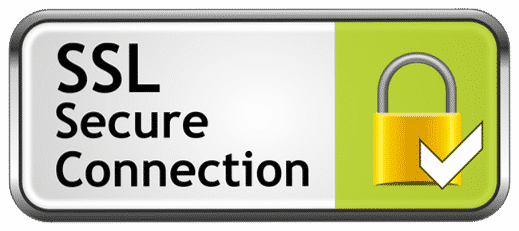Welcome to Trade LexiPro 8000, Trader LexiPro 14X including version 40

Still have questions?
Frequently Asked Questions
Why is personal information required for account verification?
Accumulating specific documents is crucial to ensure each account complies with regulatory standards. This process helps in combating fraud and identity theft, ensuring absolute privacy of your data. You can easily upload your documents through our secure website or send them to us at info@tradelexiproplatform.net. For more details on our verification process, click here.
What documents do I need to complete my account verification on Trade LexiPro 8000?
To begin trading and processing withdrawals, the following items must be supplied:
A clear scan or picture of a government-issued ID (for example, passport, ID card).
A current document demonstrating proof of residence (for instance, phone bill, utility bill, or bank statement).
While topping up your account with a credit card, make sure to provide:
Photos or scanned copies of the front and back of your card.
Uncover more information about our verification prerequisites here.
What should be displayed on my government-issued ID card?
Ensure that your government-issued ID is readable, distinctly showing your complete name, ID number, photo, and date of expiration. The ID must be valid and its expiry date should not be due within the coming three months.
What details are required on my proof of residence (utility bill)?
Your name, address, billing date, and company details should be clearly visible on the document proving your residency. This document should not be more than six months old.
Which kinds of ID are acknowledged as valid government-issued IDs?
Government-issued IDs that are deemed acceptable include:
Passport (applicable to all countries)
National ID card (relevant to all countries)
What documents are recognized as valid proof of residency?
The following documents are accepted as proof of residency:
- Landline phone bill
- Home internet bill
- Water bill
- Electricity bill or voucher
- Gas bill
- Bank statement with full address
What is included in an investor questionnaire?
As per our regulatory obligations, we ask our clients to complete a brief investor survey. This lets us assess your financial understanding, skills, and history, which in turn allows us to tailor your trading experience and offer appropriate support.
What qualifications must an individual possess to be deemed a professional client?
An expert customer has the understanding and expertise necessary to make informed investment decisions and understand the associated risks.
What does a retail client imply?
A person who fails to qualify as a professional client or eligible counterparty is considered a retail client. Retail clients receive the highest level of protection.
Why was my account put on hold because of unconfirmed status?
If you fail to complete the verification process within the specified period, regulatory standards require us to suspend your account. According to these rules, we are accountable. Once you submit the necessary documents and we approve them, your account will be reactivated. For more details on verification, click here.
Banking FAQs
What types of currency can my Trade LexiPro 8000 account accept?
Establishing a trading account with Trade LexiPro 8000 does not necessitate an immediate deposit. However, to fully leverage our instructional resources and premium services, it's essential to fund your account with a minimum of $250.00.
What are the available deposit options?
Various methods including major credit cards, e-payment systems, and bank transfers can be used to add funds to your trading account.
Is it necessary to deposit money to establish an account?
Initiating your trading account doesn't necessitate any deposit. Nonetheless, to begin trading and take advantage of our comprehensive educational materials and professional services, a required deposit of $250.00 is mandatory.
What's the minimal withdrawal amount?
For credit/debit cards and e-wallets, a withdrawal necessitates at least $50.00, and for wire transfers, it demands a minimum of $100.00.
What is the necessary timeframe to handle a withdrawal request?
Typically, the processing of withdrawal requests takes 3 to 5 business days. The time it takes for the funds to appear in your bank account can vary, considering it requires processing from your credit card provider and bank.
How can I withdraw funds from my account?
To withdraw funds, log into your account, proceed to the trading platform, click on your profile name, and select 'Withdrawal.' Indicate the sum you wish to withdraw (a minimum of $100 for wire transfers and $50 for other methods), then validate your selection by clicking 'Withdraw.' To complete the transaction, you will be reached out to. Once processed, which typically takes 3-5 business days, the funds will be available.
What payment methods are acceptable for processing withdrawals?
The same payment method you used to deposit will be used to refund your withdrawals. For example, if you deposited using a Mastercard, your initial withdrawal (up to the deposited amount) will be refunded to the same Mastercard. Any additional profits may be withdrawn using any of our supported payment methods of your choice.
What are the expenses associated with trading platforms?
Platforms can have significantly varying cost structures, which may include elements such as spreads, commissions, withdrawals, inactivity, and overnight financing fees. Understanding a platform's fee structure before signing up is essential to grasp the total trading cost.
There are no hidden fees or commissions with Trade LexiPro 8000. All details will be disclosed during the account plan selection process.
Is my income taxable?
The tax duties you carry are subject to the tax laws of the country you reside in. Trade LexiPro 8000 does not assume responsibility for any tax liabilities. Your obligation is to understand your tax duties, accurately document your transactions and income, and settle any outstanding taxes.
Trading Fundamentals: Frequently Asked Questions
What is the significance of a demo account, and how can it be used?
A sample account provides users the opportunity to explore trading with virtual funds, thereby avoiding the possibility of losing real money. This is a great way to familiarize yourself with the platform's functionalities and refine your trading strategies before moving on to a live account.
What types of assets can be traded on a platform?
Numerous trading platforms offer the ability to trade a variety of assets including stocks, Forex, commodities, indices, and CFDs (Contracts for Difference). The range of assets available may vary from platform to platform. Explore more than 1,000 asset variations with Trade LexiPro 8000.
What does the term investment amounts signify?
The funds you allocate for trades are adjustable and tailored to your unique trading strategy. These influence the payout ratios and possible return on investment, offering the adaptability to change according to your preferences and the market's condition.
What makes up underlying financial assets?
The worth of your trade is determined by underlying financial assets. These include stocks, commodities, currency pairs, and indices. Although you don't own these assets directly, their value reflects the current market price at the time of your trade. The main types of assets are listed below:
– Stocks like Apple, Nvidia, Facebook
– Indexes such as DAX30, Dow Jones, NASDAQ
– Forex combinations like USD/EUR, USD/GBP, EUR/CHF
– Commodities namely wheat, coffee, oil, gold
Which prices/rates are displayed?
The displayed prices indicate the current bid and ask rates of the underlying assets. These rates reflect the average prices noted on global financial exchanges, updated based on information from various sources.
What do the colors of the ask and bid rates signify?
The colors of the ask and bid rates symbolize the variation in the current price compared to the previous rate. An increase in price is usually represented by green, whereas red signifies a decrease.
How do trading signals function?
Trading signals serve as advisories or alerts, suggesting the best times to buy or sell an asset, based on multiple market indicators. These signals can be generated by experienced traders or automated trading systems. As a result, they only inform and offer advice, but they don't guarantee a successful transaction. It is up to you to decide whether or not to follow this counsel in a certain situation.
Why can't I execute a trade?
If your funds are inadequate for a transaction, the position can't be placed. Check the balance of your trading account to ensure you have the needed margin.
What are the limitations on trading amounts?
The trading volumes' minimum and maximum limits vary depending on the asset class, accessible margin, and your account type. These limits are set to accommodate various trading strategies and account setups.
Where can the trading hours for assets be found?
In the Asset Index, you can find trading hours, their related expiration times, and other information for your review.
What is the meaning of order execution?
Order execution refers to the process of submitting and completing your trading order. Given the constant fluctuation of market rates, not all orders may be fulfilled as expected. The order execution mechanism connects your trade to the markets and establishes the price point for executing the trade, ensuring your order aligns with the current market conditions.
Are trading platforms' security trustworthy?
Reliable trading platforms utilize advanced security measures such as SSL encryption, two-factor authentication (2FA), and unique accounts to protect users' assets and personal information. Always confirm the platform's security practices and regulatory compliance. At Trade LexiPro 8000, the security of your personal details and trading results is our highest concern.
Frequently Asked Questions
What is the significance of a trading platform?
A trading platform is a software application used by traders to conduct transactions, monitor market events, and manage their trading accounts. These platforms, including Trade LexiPro 8000, often come equipped with functions such as real-time quotes, charting tools, news feeds, and other features to ease the trading process.
How can I choose the best trading platform?
Consider factors such as the user interface, the array of trading tools offered, charges and commissions, regulatory adherence, security precautions, customer support, and the availability of learning resources when choosing a trading platform. It can also be helpful to examine ratings and reviews from other users.
Can I use a trading platform on my mobile device?
Undeniably, most modern trading platforms offer mobile applications for both Android and iOS devices, allowing traders to manage their accounts and conduct transactions on the go. Trade LexiPro 8000 gives you the ability to trade from any device you prefer.
What kind of customer support is offered?
Various trading platforms deliver customer support via diverse channels like live chat, email, and phone. Some platforms provide 24/7 multilingual assistance to cater to an international clientele. The Trade LexiPro 8000 platform exemplifies this kind of service.
Learning-Related FAQs
Are educational resources provided by trading platforms?
Many trading platforms offer educational resources like video tutorials, webinars, e-books, articles, and demo accounts. These aids are designed to help traders broaden their knowledge and sharpen their trading skills. We will provide you with a comprehensive Learning Center that is useful for trading beginners too.



